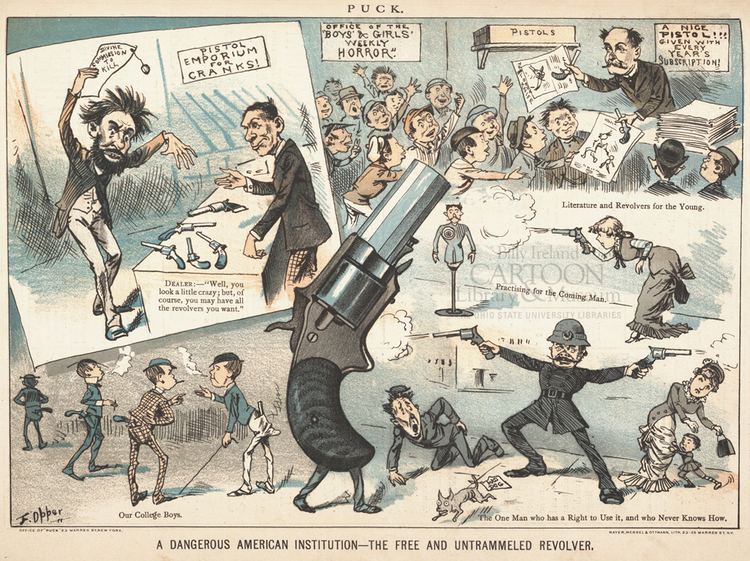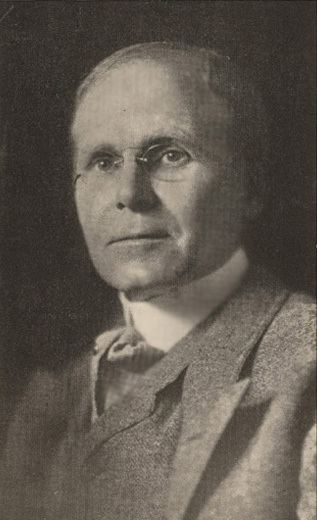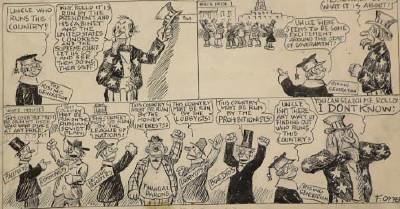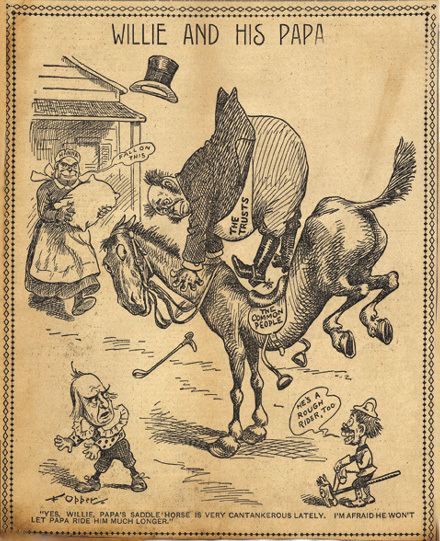Nationality American Role Comic Strip Creator Name Frederick Opper | Area(s) Cartoonist | |
 | ||
Born January 2, 1857Madison, Ohio ( 1857-01-02 ) Books Happy Hooligan, 1904-1905 | ||
Frederick Burr Opper (January 2, 1857 – August 28, 1937) is regarded as one of the pioneers of American newspaper comic strips, best known for his comic strip Happy Hooligan. His comic characters were featured in magazine gag cartoons, covers, political cartoons and comic strips for six decades.
Contents

Born to Austrian-American immigrants Lewis and Aurelia Burr Oppers in Madison, Ohio, Frederick was the eldest of three children. At the age of 14, he dropped out of public school to work as a printer's apprentice at the local Madison Gazette, and at 16, he moved to New York City where he worked in a store and continued to draw. He studied briefly at Cooper Union, followed by a short stint as pupil and assistant to illustrator Frank Beard.

Opper's first cartoon was published in Wild Oats in 1876, followed by cartoons and illustrations in Scribner’s Monthly and St. Nicholas Magazine. He worked as illustrator at Frank Leslie's Weekly from 1877 to 1880. Opper was then hired to draw for Puck by publishers Joseph Keppler and Adolph Schwarzmann. He stayed with Puck for 18 years, drawing everything from spot illustrations to chromolithograph covers.

Opper married Nellie Barnett on May 18, 1881. They had three children, Lawrence, Anna and Sophia.

Happy Hooligan
In 1899, Opper accepted an offer by William Randolph Hearst for a position with the New York Journal. His Happy Hooligan strip first appeared in the New York Journal in 1900, and it ran until 1932. Hooligan was a tramp with a little tin can hat whose gentle simplicity and bumbling good nature made him a success. On Happy's 30th birthday, Opper threw a party attended by President Hoover, former President Coolidge, Charles Schwab, Alfred E. Smith and others.
Opper's other popular strips were Alphonse and Gaston, And Her Name Was Maud, Howsan Lott and Our Antediluvian Ancestors. Beginning in 1904, Opper drew And Her Name Was Maud, about the kicking mule Maud, into comic strips, books and animation. On May 23, 1926, he positioned And Her Name Was Maud as the topper to Happy Hooligan, where it ran until both strips came to a conclusion on October 14, 1932.
Opper's strips were very popular in Italy, where Hooligan was the most loved strip character in Italy before the coming of Mickey Mouse, as declared by the major Italian poet Attilio Bertolucci. Hooligan's name in Italy was Fortunello (small lucky), and Maud's name was Checca (Francy).
Political cartoons
Opper drew influential political cartoons supporting Hearst's campaign against the "trusts" with characters "Willie and Teddy", depicting William McKinley and Theodore Roosevelt, "Willie and his Papa", satirizing McKinley and "Papa Trusts", and "Nursie", a depiction of Cleveland industrialist Mark Hanna. Opper's other characters included Mr. Common Man, which is believed to be the origin of John Q. Public. His artwork appeared in Hearst's New York Journal, Boston American, Chicago Examiner, San Francisco Examiner and Los Angeles Examiner. In 1902 he published "Nursey Rhymes for Infant Industries: An Alpahbet of Joyous Trusts" in which each of the 26 Alpahbet letters began an anti Trust rhyme.
Opper also illustrated books for Edgar Wilson Nye, Mark Twain and Finley Peter Dunne, and published his own books, including Puck's Opper Book (1888), The Folks in Funnyville (1900) and Happy Hooligan Home Again (1907).
Opper was a member of several New York clubs, and he painted as a hobby. He retired in 1934 due to failing eyesight. He died August 28, 1937 at his home in New Rochelle, New York and was cremated. Cartoonists Russ Westover and Alex Raymond took part in an August 29, 1937 memorial to Opper broadcast on New York's WNEW.
